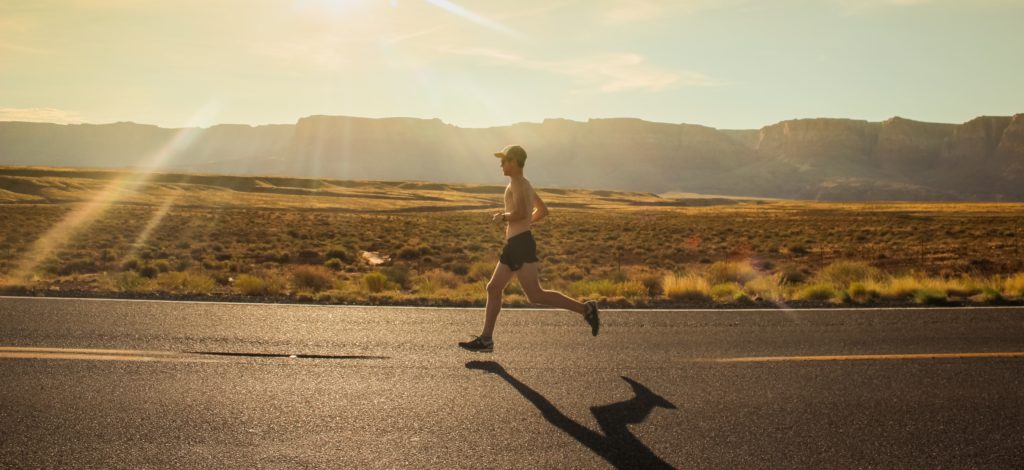
Spring is just around the corner so it is time for running enthusiasts to lace up their sneakers, get outside and run! Runners are addicted to running for good reason. There is nothing like it! No exercise offers so much in such little time. For example, the caloric expenditure while running is higher than for most other exercises, including biking. Also, it allows for fresh air and beautiful scenery with a minimal investment in clothing or equipment. It requires little skill and time to learn. Runners suffer from less depression, colds and flu symptoms, and experience less pain due to an endorphine release (natural chemical in the brain associated with euphoria and pain control) that is greater than found in other sports and activities. These are some of the motives that cause people to run every day, in spite of the constant loading and wear and tear on the joints.
To be a competitive runner and have longevity in the sport, optimal form is necessary. Moreover, a recent study shows that a runner can decrease the stresses on the lower body and reduce the incidence of stress fractures when trained to run with proper form using visual feedback while on a treadmill. The application of this information has significant implications for training programs for runners for the prevention and recovery from injury. One such low impact method is called the “Pose Running Technique,” by Dr. Nicholas Romanov. It is a “soft landing” method which promotes; an S-like body position with slightly bent knees, a slightly forward lean at the ankles to employ gravity and momentum, lifting the feet up under the hips, and landing on the ball of the foot under the body to absorb the center of mass.
It is my opinion, that the best runners, with the least injuries, such as Jordan Hoyt, speedster from Abington Heights, employ these techniques naturally. Additionally, many of the world’s best runners use coaches and trainers to assist them in their quest for success and injury prevention by using perfect form. However, for the rest of us, we must learn to maximize the efficient use of the body as it works with, not against gravity. We must learn to run “soft” to prevent injuries.
A slight upward tilt of the head to allow a view of the horizon ahead should be most comfortable. Avoid looking down or up to extremes. Do not rock or rotate the head while running.
Loose and relaxed shoulders set the tone for a good run. Keep them level without tilting side to side or rotating left to right. Avoid holding the shoulders in a tight and high position.
Loose and relaxed arms also set the tone for a good run. A good arm swing is always in forward motion in a linear direction and stays between the waist and lower chest. Never clench the fist. Do not rotate or twist the arms across the body.
If the head, shoulders and arms are in correct position, then the torso will be upright. An erect running posture is necessary to promote efficient movement and breathing. The posture that you assume when taking a deep breath is the correct torso position for good breathing while running.
The hips will follow the position of the parts above in a linear forward direction. However, if the torso leans forward because the head hangs down then the hips will tilt downward. If the arms swing and torso rotates side to side, then the hips will also rotate.
Sprinters need to lift the knees high to thrust the lower legs forward. Long distance runners cannot maintain a high knee lift for a long period of time, however, a slight knee lift with a shorter but quicker stride is more efficient. Proper running requires the foot to softly strike the ground with the knee slightly bent. If the knee is fully extended in front of the body upon impact, the stride is too long and the force too great.
To excel as a runner, when the foot hits the ground it should land lightly, between the heel and the midfoot. The ankle is flexed and rolls quickly forward to the toes to push off the ground with maximum force. The calf muscle propels the runner forward. Efficient running has a quiet and springy landing. A loud foot slap on impact is a sign of poor form and results in excessive force transferred to the lower leg. The foot should spend as little time as possible in contact with the ground…thus a soft runner “floats” when they run.
SOURCES: Runner’s World, Pose Running Technique (www.posetech.com), Journal of Orthopaedic and Sports Physical Therapy.

NEXT MONDAY – Read Dr. Paul J. Mackarey “Health & Exercise Forum!”
This article is not intended as a substitute for medical treatment. If you have questions related to your medical condition, please contact your family physician. For further inquires related to this topic email: drpmackarey@msn.com
Paul J. Mackarey PT, DHSc, OCS is a Doctor in Health Sciences specializing in orthopaedic and sports physical therapy. Dr. Mackarey is in private practice and is an associate professor of clinical medicine at GCSOM.